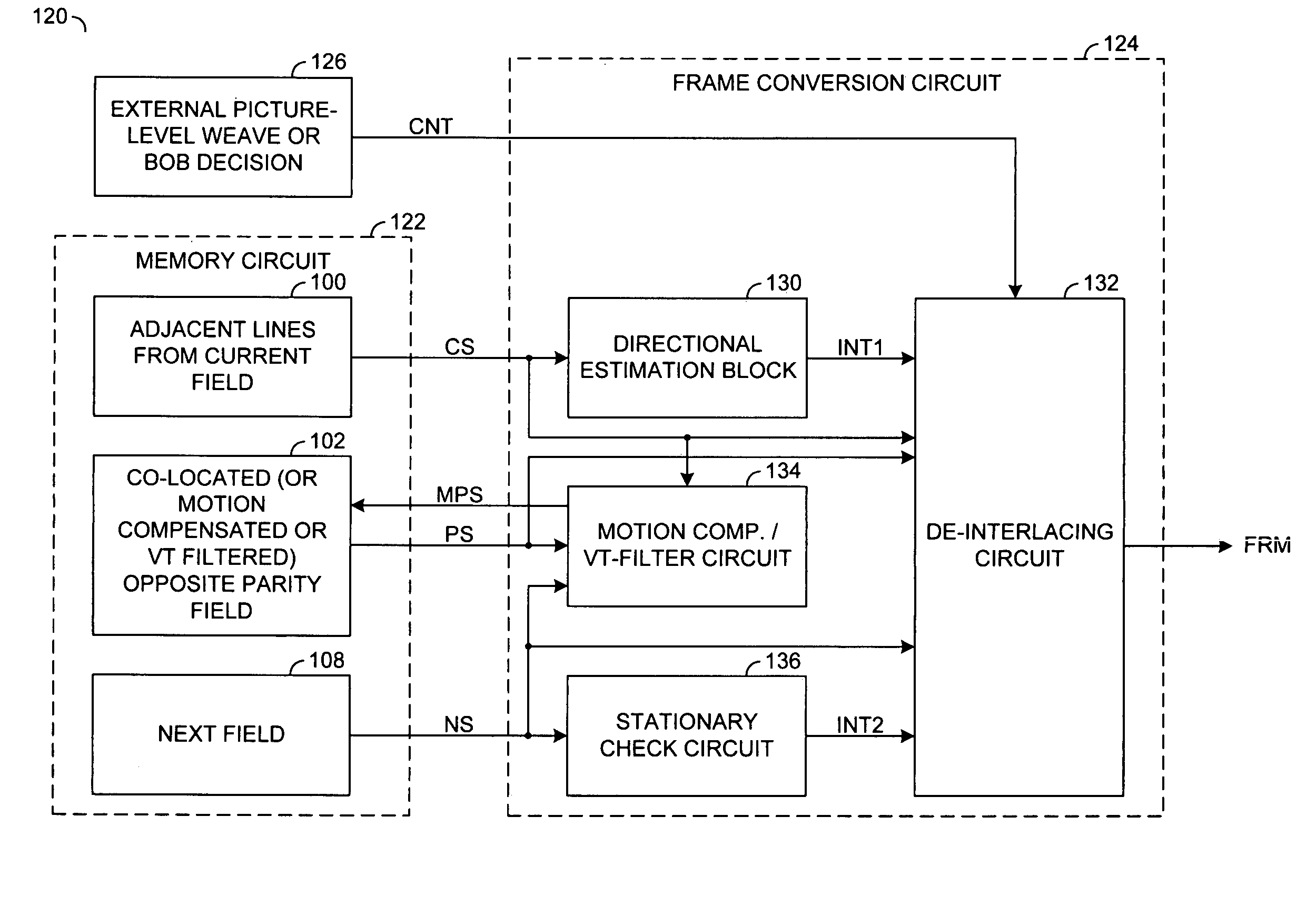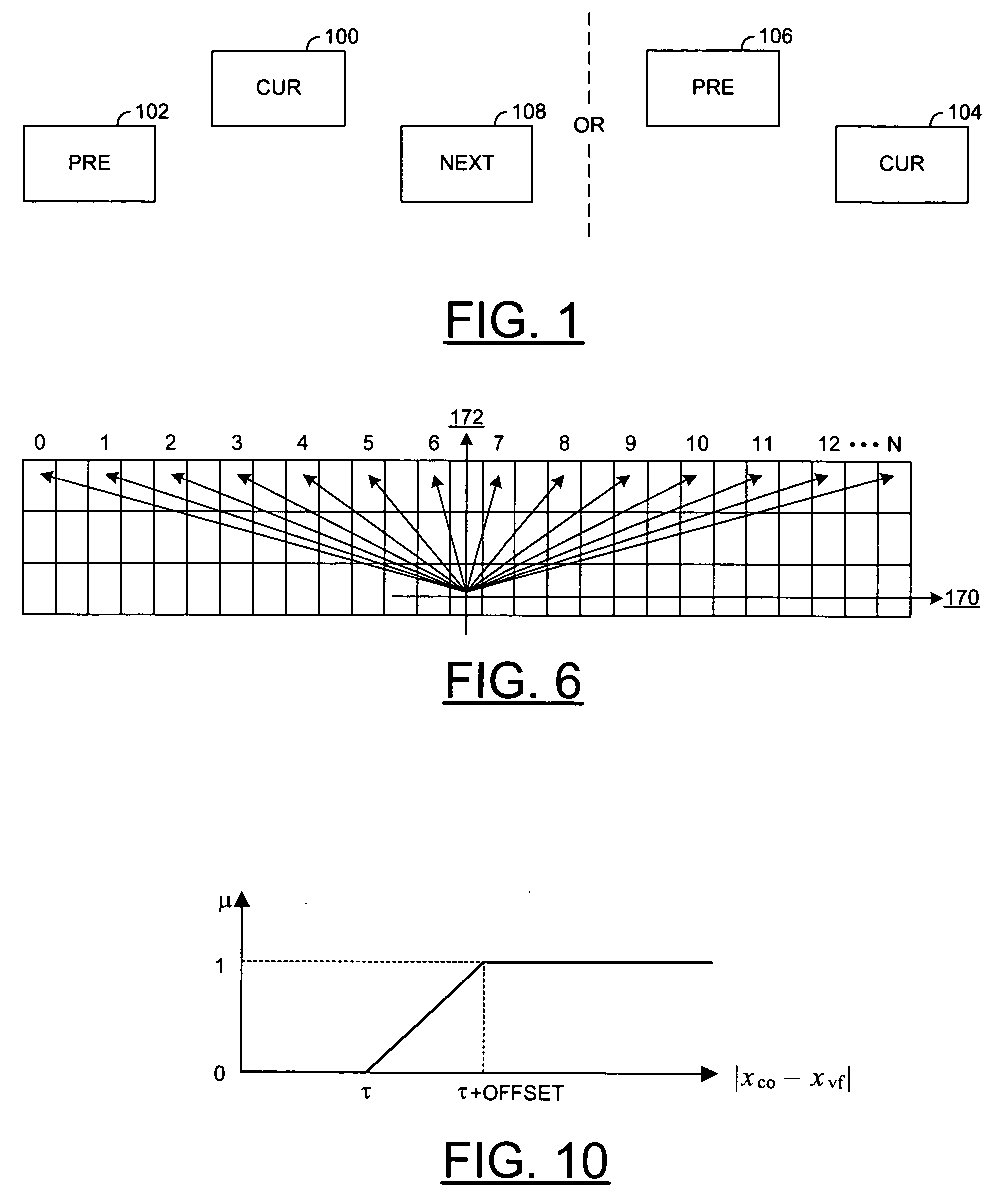Method and apparatus for video and image deinterlacing and format conversion
a video and image deinterlacing and format conversion technology, applied in the field of digital video generally, can solve the problems of reducing the vertical detail of both images and videos, reducing the memory bandwidth of both images and video, and affecting the quality of video, so as to achieve minimal memory bandwidth, improve quality, and reduce the effect of arithmetic operations
- Summary
- Abstract
- Description
- Claims
- Application Information
AI Technical Summary
Benefits of technology
Problems solved by technology
Method used
Image
Examples
Embodiment Construction
[0024]The present invention is best realized as a very low-cost, but high quality deinterlacing process, method, apparatus and / or architecture. The invention may be referred to as a reduced enhanced motion adaptive deinterlacing (REMADI) architecture. High quality may be realized through the several attributes of the method. The REMADI approach may adaptively select and blend picture-level and pixel-level switching and blending mechanism estimates for pixels or luminance samples located between the horizontal field lines of a current field. The estimates may be based upon (i) previous field pixels (e.g., weave), (ii) a vertical filtered interpolation from the current field (e.g., bob) and / or (iii) a directionally interpolated estimate from the current field. The directional interpolated estimate generally provides an efficient approach that may minimize silicon cost by reducing a bit-depth of a detector and using regular structures such that arithmetic operations may be reduced.
[002...
PUM
 Login to View More
Login to View More Abstract
Description
Claims
Application Information
 Login to View More
Login to View More - R&D
- Intellectual Property
- Life Sciences
- Materials
- Tech Scout
- Unparalleled Data Quality
- Higher Quality Content
- 60% Fewer Hallucinations
Browse by: Latest US Patents, China's latest patents, Technical Efficacy Thesaurus, Application Domain, Technology Topic, Popular Technical Reports.
© 2025 PatSnap. All rights reserved.Legal|Privacy policy|Modern Slavery Act Transparency Statement|Sitemap|About US| Contact US: help@patsnap.com



